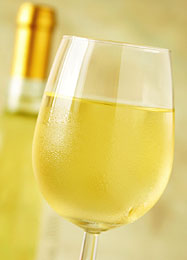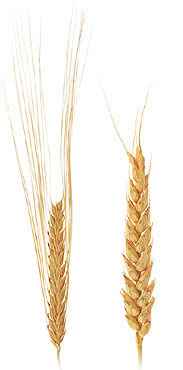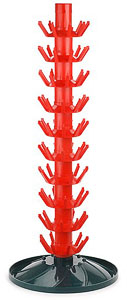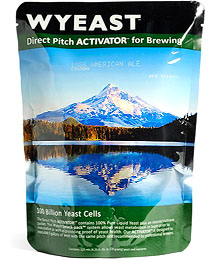 Valentine’s Day is coming up – it’s this Friday, by the way. Need a gift for the brewer or beer geek in your life? Show them how much you love them with the gear that will allow them to take their favorite hobby to the next level! Here are some gift ideas!
Valentine’s Day is coming up – it’s this Friday, by the way. Need a gift for the brewer or beer geek in your life? Show them how much you love them with the gear that will allow them to take their favorite hobby to the next level! Here are some gift ideas!
- A Bag of Grain – For all-grain brewers, you can never have too much malt. A 50 lb. bag of two-row brewer’s malt will be enough to form the base for at least 4-5 recipes. You can be sure that this is a gift that will be put to good use!
- Grain Mill – With all that grain, your homebrewer may want their own mill. After all, the grain will have the best flavor and efficiency of it’s milled on brew day. The American-made Barley Crusher can mill up to six pounds of malt a minute when you use an electric drill. The 15 lb. version has a hopper that will hold more than twice as much grain.
- Mash-Lauter Tun Set-Up – If your homebrewer is eager to advance to all-grain brewing, they will need a mash tun (a separate vessel for mixing grains with water). Our cooler style mash-lauter tuns offer convenience and affordability. A stainless steel mash tun with false bottom can easily be the centerpiece of a state of the art home brewing system.
- A New Fermenter – Allow your homebrewer to make even more beer with an extra fermenter! The 6-Gallon Poly-Fermenter is ideal for primary fermentations and has a spout for easy transfers. You can also choose from a variety of fermentation carboys.
- Homebrew Draft System – Give your homebrewer the convenience of serving their homemade beer on draft! A standard draft system makes this possible. Also consider a kegerator conversion kit so your homebrewer can build their own kegerator!
- Homebrew Equipment Kit – Maybe your beer lover has yet to begin homebrewing. In that case, get them a Beermaker’s Necessities Box, an equipment kit including all the tools of the trade. You can also choose an ingredient kit for their first batch. The only other thing you will need is a five-gallon brew pot.
- A Homebrewing Book – Homebrewing is a constant exploration of techniques and ingredients. Help your homebrewer along on their journey with one of our popular homebrew books or DVDs.
- Gift Card – Not sure what to get? Let your homebrewer choose for themselves exactly what they want! Gift cards from E. C. Kraus are a great option. (And they take the guesswork out of gift shopping!)
Are you a homebrewer? What would you like for Valentine’s Day?
————————————————————————————————————
David Ackley is a beer writer, brewer, and self-described “craft beer crusader.” He holds a General Certificate in Brewing from the Institute of Brewing and Distilling and is founder and editor of the Local Beer Blog.

 Hi everyone!
Hi everyone! My name is Leigh Erwin, and I am a brand-spankin’ new home winemaker! E. C. Kraus has asked me to share with you my journey from a first-time dabbler to an accomplished home winemaker. From time to time I’ll be checking in with this blog and reporting my experience with you: the good, bad — and the ugly.
My name is Leigh Erwin, and I am a brand-spankin’ new home winemaker! E. C. Kraus has asked me to share with you my journey from a first-time dabbler to an accomplished home winemaker. From time to time I’ll be checking in with this blog and reporting my experience with you: the good, bad — and the ugly. Hi guys! Leigh here!
Hi guys! Leigh here! There’s a nearly endless debate among brewers about the merits of two-row barley versus six-row barley. Some homebrewers have a preference for one over the other, but in fact, neither is “better” than the other. Both six-row and two-row malt have their place in craft and home brewing. This post will explain the difference between
There’s a nearly endless debate among brewers about the merits of two-row barley versus six-row barley. Some homebrewers have a preference for one over the other, but in fact, neither is “better” than the other. Both six-row and two-row malt have their place in craft and home brewing. This post will explain the difference between  It’s like Christmas all over again at the Erwin residence!
It’s like Christmas all over again at the Erwin residence! Your votes have been counted, and the results have been tallied. Below are the 10 most popular winemaking blog posts of 2013 from the E. C. Kraus blog. The results are based on a combination of: visits, social sharing and comments from you the reader.
Your votes have been counted, and the results have been tallied. Below are the 10 most popular winemaking blog posts of 2013 from the E. C. Kraus blog. The results are based on a combination of: visits, social sharing and comments from you the reader. I started out wrong by air-locking my vessel from the start. I have two 5 gallon carboys; one containing Ruby Cabernet and the other French Colombard. The second mistake I made was to allow the juice to get too cold; below 40 degrees. I have since brought the juice home to a warmer atmosphere, where the French Colombard began to produce tiny bubbles, whereby popping at the air gap device; however, the Ruby is lying dormant. How should I proceed from here?
I started out wrong by air-locking my vessel from the start. I have two 5 gallon carboys; one containing Ruby Cabernet and the other French Colombard. The second mistake I made was to allow the juice to get too cold; below 40 degrees. I have since brought the juice home to a warmer atmosphere, where the French Colombard began to produce tiny bubbles, whereby popping at the air gap device; however, the Ruby is lying dormant. How should I proceed from here? In several earlier posts, we introduced a few home winemaking terms that you may or may not be familiar with. There are many terms to learn in home winemaking, and this post, like all the previous posts, gives you a short introduction to a few of those terms to help you get started in home winemaking, or perhaps brush up on some of the terms you may not have seen in a while.
In several earlier posts, we introduced a few home winemaking terms that you may or may not be familiar with. There are many terms to learn in home winemaking, and this post, like all the previous posts, gives you a short introduction to a few of those terms to help you get started in home winemaking, or perhaps brush up on some of the terms you may not have seen in a while. Continuing our exploration of homebrewing terminology, this week we will focus on some characteristics and terms you may hear having to do with
Continuing our exploration of homebrewing terminology, this week we will focus on some characteristics and terms you may hear having to do with